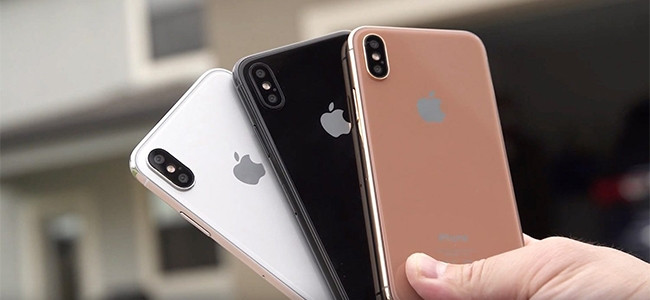
From 2017 onward, the market for 3D sensing solutions used in mobile devices will witness leaping growth.
This is according to market intelligence firm TrendForce, which notes major technology companies have been developing solutions and platforms for 3D sensing, which is expected to be featured on the upcoming iPhone devices.
TrendForce says the total value of the global market for 3D sensing modules used in mobile devices is estimated to reach $1.5 billion in 2017 and is forecast to grow at a massive CAGR of 209% to around $14 billion in 2020.
The firm explains that the 3D sensing module that is being discussed includes infrared transmitter and receiver components.
It points out that some of the 3D sensing solutions that are now available on the market include Intel's RealSense, Google's Tango and the REAL3 Image Sensor family jointly developed by Infineon and PMD Technologies.
More recently, Qualcomm and another fabless semiconductor company Himax also announced they will combine their 3D sensing technologies so as to accelerate their entry into associated application markets.
According to TrendForce, the activities from these solution developers are also driving the demand for related hardware, benefitting component suppliers such as AMS, Heptagon and Lumentum.
It notes Microsoft was one of the early adopters of 3D sensing. Its Surface Pro 4, which was released in 2015, carried a 3D sensing module. Since then, brands such as Google, Lenovo and Asus have also launched smartphones featuring 3D sensing to gauge the market for related mobile applications.
TrendForce analyst Jason Tsai notes the strong likelihood of Apple adding the 3D sensing feature into its 10th anniversary iPhone refresh means the market for 3D sensing hardware will expand at an accelerated pace.
"Based on an analysis model that includes iPhone-driven demand, the global market for 3D sensing modules used in mobile devices is projected to register a spectacular annual growth rate of 703% in the total value for 2017," says Tsai.
He points out the arrival of iPhone devices with 3D sensing would generate significant interests in the related hardware from Samsung, Huawei and other smartphone brands.
"Over the next two to three years, the third-party software developers will produce more mobile apps that require the 3D sensing function," Tsai says. "As 3D sensing apps mature, smartphone makers will also accelerate the incorporation of related hardware into their mainstream offerings. TrendForce therefore expects another demand surge in the mobile 3D sensing market in 2019."
Tsai adds the 3D sensing feature on smartphones is currently used mainly for tasks that involve facial recognition of the user, such as unlocking the device and mobile payment. The market growth momentum for 3D sensing hardware will depend on component suppliers and smartphone makers finding low-cost, useful and wide-ranging applications, he says.
"From the perspective of smartphone makers, the development of third-party apps will be influential to raising the overall price-performance ratio of 3D sensing modules," Tsai concludes.
Share